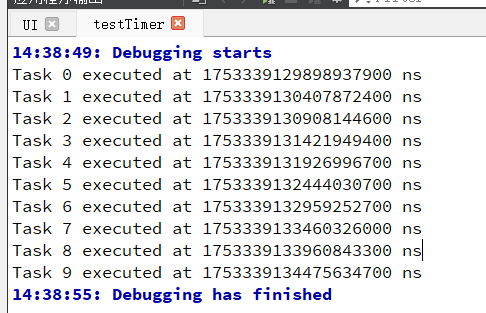C++实现精确延时的方法
在C++中实现精确延时有多种方法,以下是几种常见的实现方式,适用于不同场景和精度要求:
1. 标准库方法
<chrono> 高精度延时 (推荐)
#include <chrono>
#include <thread>void preciseDelay(int milliseconds) {auto start = std::chrono::high_resolution_clock::now();while (true) {auto now = std::chrono::high_resolution_clock::now();auto elapsed = std::chrono::duration_cast<std::chrono::milliseconds>(now - start).count();if (elapsed >= milliseconds) {break;}std::this_thread::sleep_for(std::chrono::microseconds(100)); // 减少CPU占用}
}2. Windows平台专用方法
高精度定时器 (Windows API)
#include <windows.h>void preciseDelayWin(int milliseconds) {// 提高系统定时器精度(1ms)TIMECAPS tc;timeGetDevCaps(&tc, sizeof(TIMECAPS));timeBeginPeriod(tc.wPeriodMin);LARGE_INTEGER frequency;LARGE_INTEGER start;LARGE_INTEGER end;QueryPerformanceFrequency(&frequency);QueryPerformanceCounter(&start);do {QueryPerformanceCounter(&end);} while ((end.QuadPart - start.QuadPart) * 1000 / frequency.QuadPart < milliseconds);timeEndPeriod(tc.wPeriodMin);
}3. Linux平台专用方法
nanosleep 高精度延时
#include <time.h>void preciseDelayLinux(int milliseconds) {struct timespec ts;ts.tv_sec = milliseconds / 1000;ts.tv_nsec = (milliseconds % 1000) * 1000000;int res;do {res = nanosleep(&ts, &ts);} while (res != 0);
}4. 忙等待实现 (最高精度但最耗CPU)
#include <chrono>void busyWaitDelay(int milliseconds) {auto start = std::chrono::high_resolution_clock::now();while (true) {auto now = std::chrono::high_resolution_clock::now();auto elapsed = std::chrono::duration_cast<std::chrono::milliseconds>(now - start).count();if (elapsed >= milliseconds) {break;}}
}5. Qt框架实现
#include <QElapsedTimer>
#include <QThread>void qtPreciseDelay(int milliseconds) {QElapsedTimer timer;timer.start();while (timer.elapsed() < milliseconds) {QThread::usleep(100); // 减少CPU占用}
}精度比较表
| 方法 | 精度 | CPU占用 | 跨平台 | 备注 |
|---|---|---|---|---|
<chrono> + sleep | 1-5ms | 低 | 是 | 推荐通用方案 |
| Windows API | <1ms | 中 | 否 | Windows最佳方案 |
| nanosleep | <1ms | 低 | Linux/Unix | Linux最佳方案 |
| 忙等待 | <0.1ms | 100% | 是 | 仅用于极短延时 |
| Qt实现 | 1-5ms | 低 | 是 | Qt项目适用 |
使用建议
通用场景:使用C++11
<chrono>库实现,兼顾精度和可移植性Windows高精度:使用
QueryPerformanceCounter+timeBeginPeriod实时性要求高:考虑RTOS或专用硬件定时器
避免忙等待:长时间延时应结合sleep以减少CPU占用
示例:精确500ms延时循环
#include <iostream>
#include <chrono>
#include <thread>int main() {for (int i = 0; i < 10; i++) {auto start = std::chrono::high_resolution_clock::now();// 你的任务代码std::cout << "Task " << i << " executed at " << std::chrono::system_clock::now().time_since_epoch().count() << " ns" << std::endl;// 精确延时500msauto end = std::chrono::high_resolution_clock::now();auto elapsed = std::chrono::duration_cast<std::chrono::milliseconds>(end - start).count();if (elapsed < 500) {std::this_thread::sleep_for(std::chrono::milliseconds(500 - elapsed));}}return 0;
}运行结果如下:

选择哪种方法取决于你的具体需求、目标平台和精度要求。
